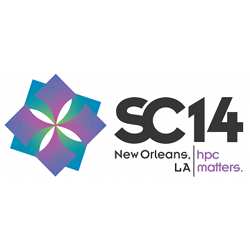
Even with a supercomputer, it may be impossible to predict an earthquake, but supercomputing makes it possible to report how the ground is shaking and when the shake will arrive at a particular spot. Likewise, for a tsunami and a tornado’s likely path of destruction. A warning can then go out at the speed of light, giving people time, even if only a minute or two, to run or cover up, possibly the difference between life and death.
In a special plenary session at the SC14 supercomputing conference in New Orleans this week, Eng Lim Goh, chief technology officer of SGI, and Piyush Mehrotra, chief of NASA’s Advanced Supercomputing Division, offered a detailed, inspired view of how computational scientists have developed the technology and where it is helping take everyone else. It is also the kind of thinking that prompted the conference to label itself "HPC Matters" to emphasize the central but often invisible way the technology supports everyday human activity.
Describing such applications as "extracting signal from noise," Goh and Mehrotra explained supercomputing is today in food production, weather forecasting, regulating the stock market, and checking postage at the rate of 30,000 pieces of mail an hour at the Post Office. It is also in the kind of applications the technology is traditionally known for and for which there is no alternative, like rendering colliding galaxies, analyzing genomic data, identifying promising locations for oil wells, modeling the Earth’s climate and oceans, searching for exoplanets, and "peeling back the onion," as Goh put it, visualizing the known universe’s 13.8 billion-year timeline, and increasingly before… to a time before stars, before even light. Such a grand vision means managing 10 petabytes a day, even after filtering.
Supercomputational thinking has also yielded computer-generated movie animation, including some of the highest grossing titles ever, like Avatar, Titanic, and The Avengers. Lesser-known applications include gleaning insights from social media activity, including in billions of tweets. Formula 1 race car "shells" can be "recreated" for a particular race day and track conditions. Supercomputer-designed Speedo Olympic swimsuits gave their wearers, including Michael Phelps, such an advantage they were eventually banned. Without such a suit, Goh said he himself might be perhaps "10,000 sit-ups away" from achieving Phelps’s form.
Andrew Rosenbloom is senior editor of Communications.



Join the Discussion (0)
Become a Member or Sign In to Post a Comment